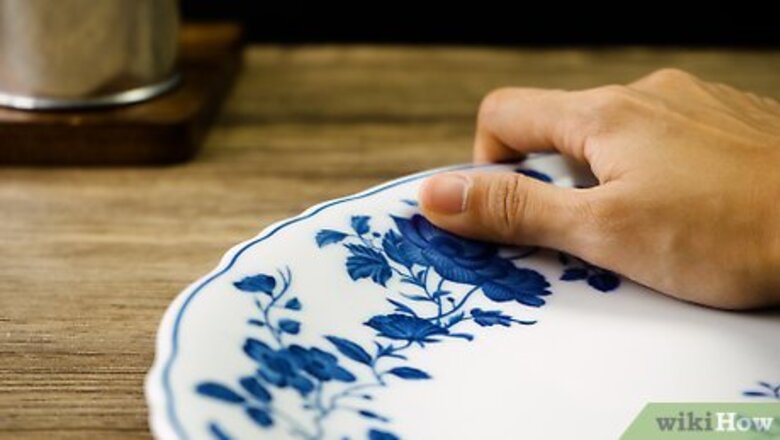
views
Washing Standard Porcelain

Run your finger over any designs to ensure they’re under the glaze. If there are any lines, inlays, or images on your porcelain dish, run your finger over the surface of the dish. If the dish is perfectly smooth and you can’t feel anything raised on the plate, the design is protected by the porcelain glaze and you can wash it like standard porcelain. If the designs or inlays are raised and you can feel their edges elevated on the surface of the dish, the design is on top of the glaze. Skip to the third section to determine how to wash these kinds of dishes. Porcelain dishes with gold or silver rims must be treated the same way as porcelain with designs over the glaze, even if you don’t feel any elevation on the dish.
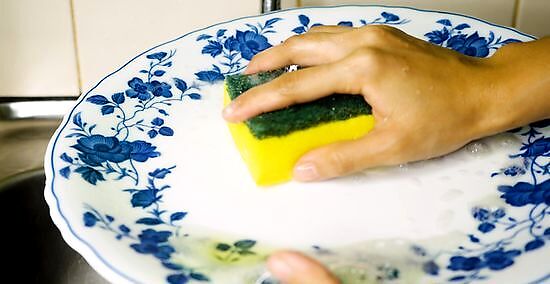
Scrub standard porcelain with a warm water and a mild dish soap. To wash standard porcelain dishes by hand, pour a squirt of mild dish soap on to a wet sponge. Then, rub the sponge gently into the porcelain dish using smooth circular motions. Once the dish appears to be clean, rinse it off under lukewarm water. Either air dry your hand-washed porcelain or rub it dry with a clean cloth or paper towel.
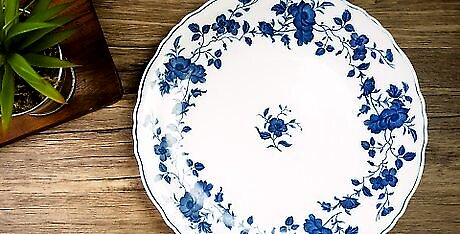
Wash standard porcelain in the dishwasher on the lowest power setting. Set porcelain dishes in your washing machine’s rack so that no pieces overlap or touch one another. Load your dishwasher with an unscented dishwasher detergent and run it on the lowest power setting to clean your dishes.Warning: Never allow porcelain dishes to overlap or touch one another in the dishwasher. Your porcelain is highly likely to chip or crack at the point where the 2 dishes overlap while you run the dishwasher. There’s nothing wrong with washing porcelain dishes in the dishwasher. It’s not going to damage standard porcelain over time or wear away the glaze. These dishes are designed to withstand machine-washing.
Removing Tough Stains from Standard Porcelain

Use baking soda and water to spot clean porcelain. Mix 1 tablespoon (14.8 ml) (14 grams) of baking soda with 2 tablespoons (30 mL) of water until it forms a thick paste. Then, rinse your plate under warm water and apply the paste to the dish with a clean sponge or wash cloth. Rub the dirty area in a smooth, circular motion until the stain or food residue disappears. Rinse the baking soda off under cool water. Air dry your dishes or wipe them with a towel after rinsing them off. For a more abrasive option, replace the water with white vinegar. Just be sure to wear gloves and do this in your sink if you choose this option though, since baking soda and vinegar will foam up and expand.

Soak dishes in a vinegar solution for 2-3 hours to soften serious stains. If your dirty porcelain can’t be spot cleaned, fill a large bowl with water and squirt a moderate amount of dish soap into the bowl. Mix the water with a spoon until the water is soapy. Soak your porcelain dish in the bowl for 2-3 hours before rinsing the dish off or attempting another cleaning solution. Rinse your dish multiple times after soaking it and wipe it dry with a clean cloth when you’re done. This is a great way to soften grease or oil residue before machine-washing.

Rub lemon juice and salt into the porcelain to remove rust stains. Put on rubber gloves and grab a clean washcloth. Pour 2–3 tablespoons (30–44 mL) of lemon juice into the washcloth and sprinkle 1 teaspoon (5 grams) of table salt into the cloth. Then, gently rub the rusty stain using a soft circular motion until the rust is gone. Rinse your dish thoroughly after the rust is gone.Variation: If you have dark discoloration from food dyes, coffee, or soy sauce, replace the lemon juice with white vinegar. You can air dry or hand dry your dish with a clean cloth after doing this. Porcelain often rusts when people leave metal on the dish for a long period of time. It can also occur if you use a metal stand to display your porcelain.
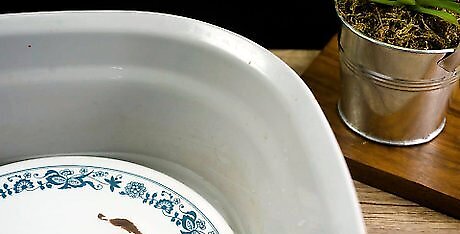
Soak heavily-stained porcelain in hydrogen peroxide for 2-3 days. If your porcelain dish has been neglected for a long period of time, the stains may be extremely difficult to remove. To get rid of these stains, get a large glass bowl or rubber bin. Place your porcelain inside and fill the bowl or bin with enough hydrogen peroxide to submerge the porcelain. Put a lid or plastic wrap over the bowl or bin and let the porcelain soak for 2-3 days. After thoroughly washing your dish multiple times, let your dish air dry or wipe it down with a dry towel. Wash your porcelain with soap and water after doing this. You want to ensure that you get all of the hydrogen peroxide off before using your dish.
Cleaning Painted or Decorative Porcelain
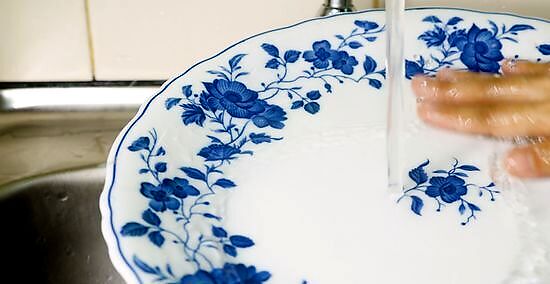
Rinse off painted porcelain gently by hand with plain water. Any designs or images that sit on top of the porcelain’s glaze will wear away if you use an abrasive or acidic cleaner. As soon as you’re done using these dishes, use a microfiber cloth and cool water to wash them. Use a soft circular motion to gently brush away any dirt or residue. Let your porcelain air dry after washing it.Tip: You can use a pea-sized dollop of dish soap to help remove stains if you’d really like, but you shouldn’t need to do this is if you wash the porcelain right after you use it. Painted porcelain is generally meant to be kept for special occasions or decoration. These pieces are not intended to be used regularly.
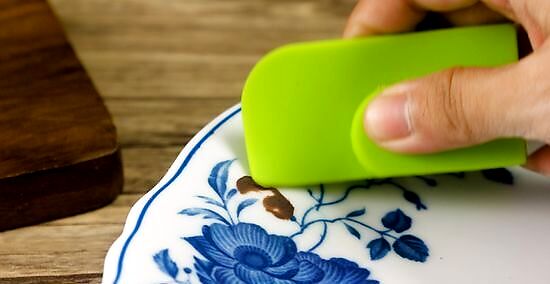
Scrape painted porcelain with a rubber scraper to remove food residue. If there are any chunks of food or dried liquids that won’t come out with water, grab a rubber scraper or rubber spatula. Use the soft edge to gently scrape the residue away under a steady stream of cool water. The friction from the rubber edge is usually more than enough to remove residue without wearing away any paint.

Brush decorative porcelain with a soft, dry brush to get rid of dust. If you have some beautiful porcelain dishes displayed in your home, use a soft, dry paintbrush or makeup brush to dust and clean them regularly. Take the dishes out of their display case and brush lightly by running the bristles over the porcelain in a back-and-forth pattern. Return the porcelain to its display case when you’re done. If you haven’t been eating off of the porcelain or using the dishes as saucers, you don’t need to rinse or wash them. You can use a damp cotton swab to spot clean particularly nasty areas, but you should avoid washing or soaking decorative porcelain.
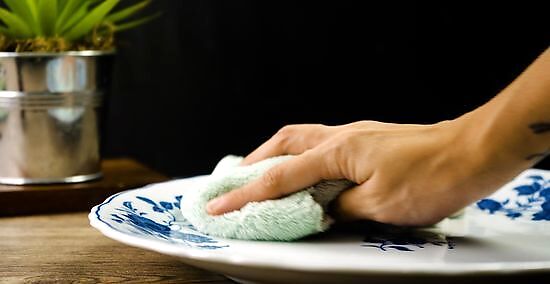
Wipe antique porcelain periodically with a dry microfiber cloth to remove dust. If you have antique porcelain or china, never wash it with soap and water. Antique porcelain is generally considered more valuable if you don’t clean it or remove any stains. If you want to remove dust, use a dry cloth to gently wipe off the surface occasionally. If your porcelain is damaged or cracked, contact an antique dealer to see if it’s worth getting repaired or not. Often, damaged antique porcelain is worth more than antique porcelain that has been fixed.


















Comments
0 comment